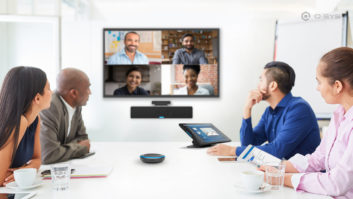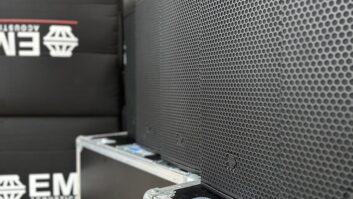Brad Price, senior product marketing manager at Audinate on the rise and rise of Dante and the addition of video with Dante AV…
 What has helped result in Dante being adopted by more than 91 percent of the professional audio market?
What has helped result in Dante being adopted by more than 91 percent of the professional audio market?
Several things, but I’d primarily point to two main reasons. One, we created a business model that was centred entirely upon interoperability between different manufacturers, and second, we made it easy. A lot of work was put into ensuring the Dante could be understood and used by real people in real life situations.
These factors made Dante a sought-after feature that has now found its way into thousands of products that all work together.
Has security been elevated as a system requirement for network architecture by channel partners and end-users?
Security has become more visible, as well it should be. Legacy analog systems had virtually no concept of security, whereas networking has a long history of security-related features, best practices and thinking.
There are several types of security that address different problems. Most security features aren’t targeted at “hackers” but rather at restricting what regular users can do to keep the system functioning properly. Features of that sort are found in Dante Domain Manager, which enforces user authentication and roles that prevent unwanted changes from occurring. When end-users talk about security, that’s almost always what they have in mind. They’re asking, “who can make changes to my system?”
How will the addition of video to Dante change things for those in the installation world?
Dante AV opens many possibilities. The same networks that are used for Dante audio can be used for Dante video at the same time, employing the same cables and switches. It’s almost like getting video connections for free once you’ve got audio, which can greatly reduce the cost and complexity of assembling an AV system. It is truly a game-changer.
What applications do you see as benefiting most from Dante AV-enabled products?
Conferencing and higher education spring to mind, as both rely heavily upon real-time video content and interaction. As the products themselves evolve and more manufacturers enter the market of Dante-enabled video products, we expect to see usage spread to other sectors: broadcast, residential, advertising, and more.
How will Dante AV improve over current workflows?
Dante AV does for video what Dante did for audio: make it easy and make it “just work.” Workflows that are currently complex and involve many pieces of gear and cables may be replaced by workflows that consist of one or two mouse clicks. Issues with formats and special connector types simply vanish. Over the long run, AV-over-IP is the best, most cost-effective way of getting this work done.
What are the economic benefits of Dante AV to integrators and end-users?
Networked products are much easier to install and far more flexible – the same cable carries everything, no need for special runs of some particular type to get something done. Changing routes no longer means moving anything at all, just a click. Networked AV is less expensive to install and far easier to expand and retrofit, because adding devices simply means plugging into another ubiquitous switch port. Unlike installations with fixed cable locations for specific needs, AV-over-IP is uniform and requires no special gear to extend.
How does Dante AV work with Dante audio systems?
Dante AV is Dante – a single system. Adding Dante AV devices to existing Dante audio networks simply means that now Dante Controller shows you video and audio devices, and all the connection metaphors remain the same. The only change is that now Dante carries more than one type of signal, which is clearly identified in the UI of Dante Controller. It’s still just one click to make it work, just as before.







